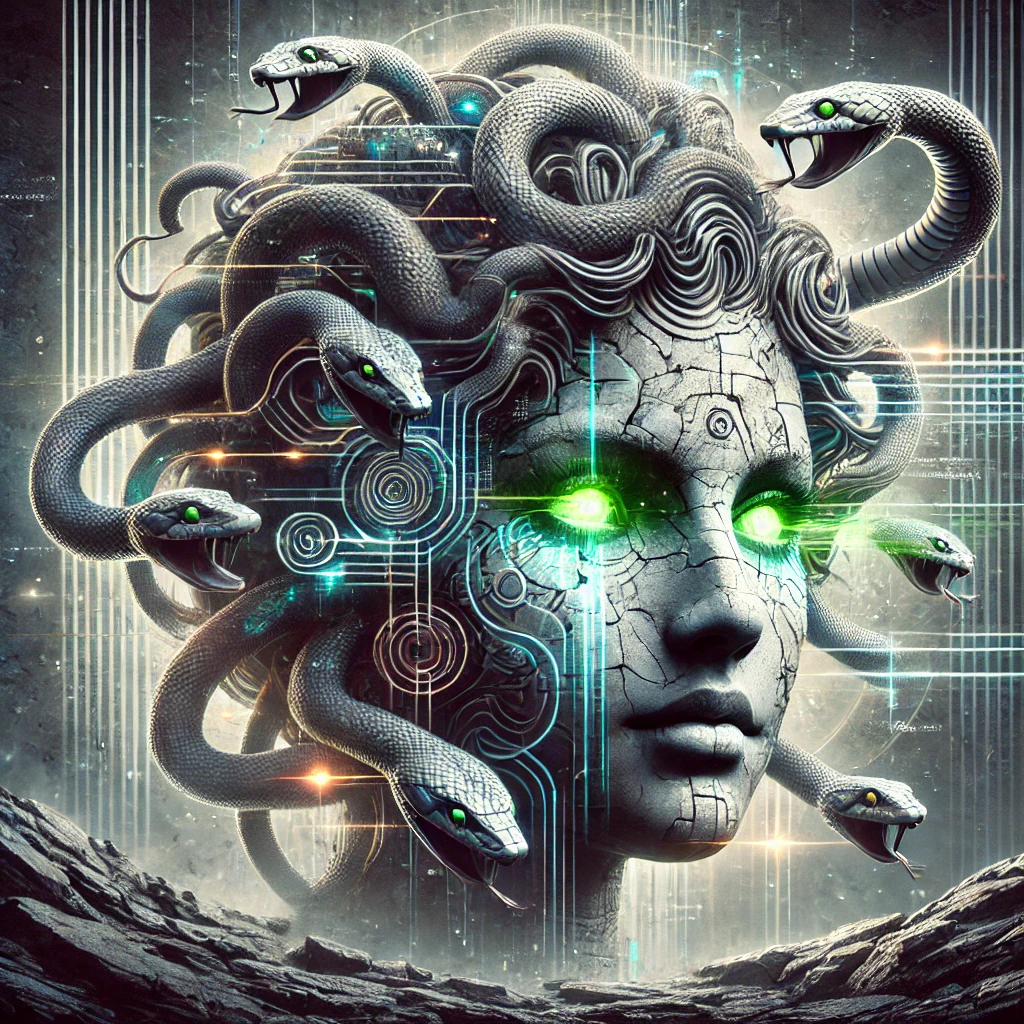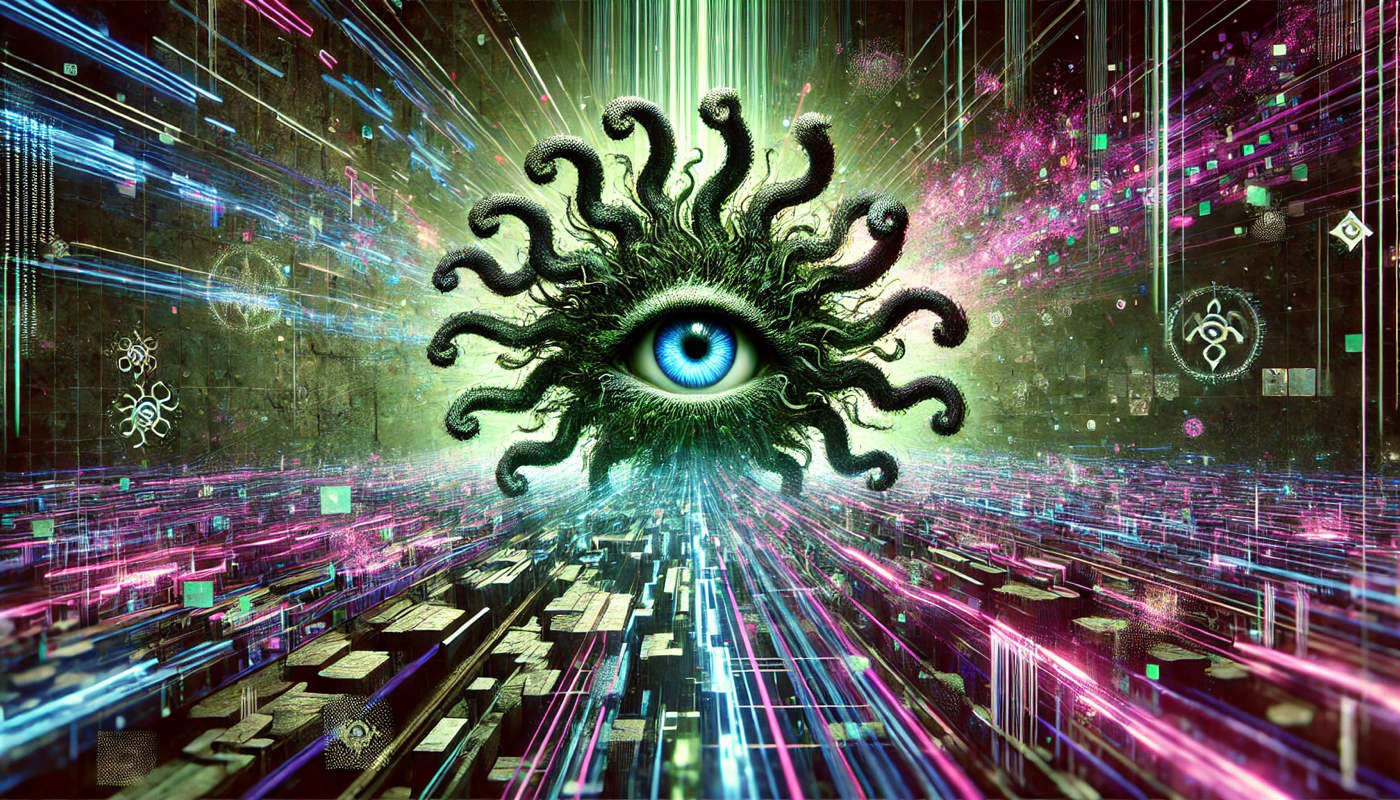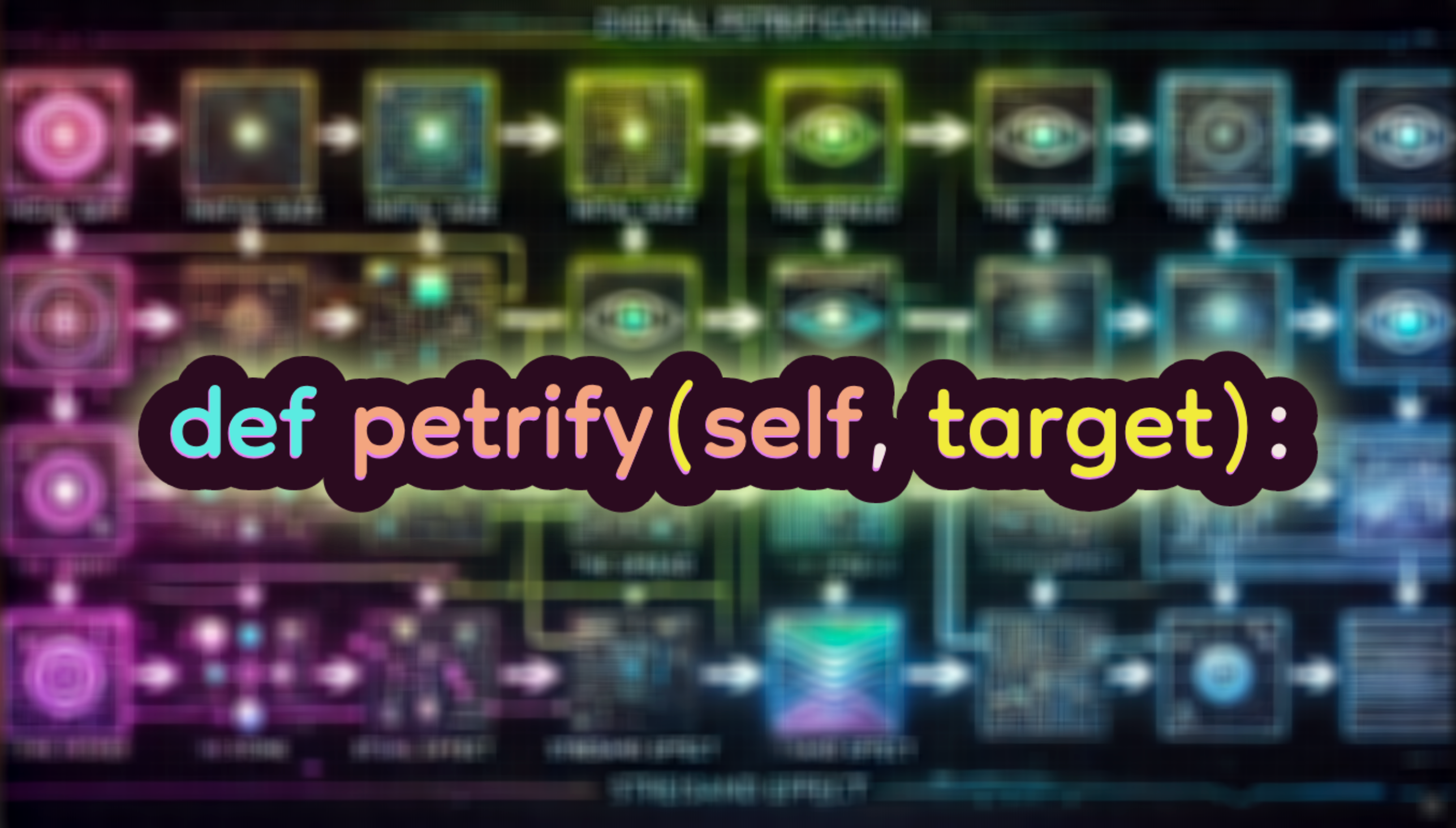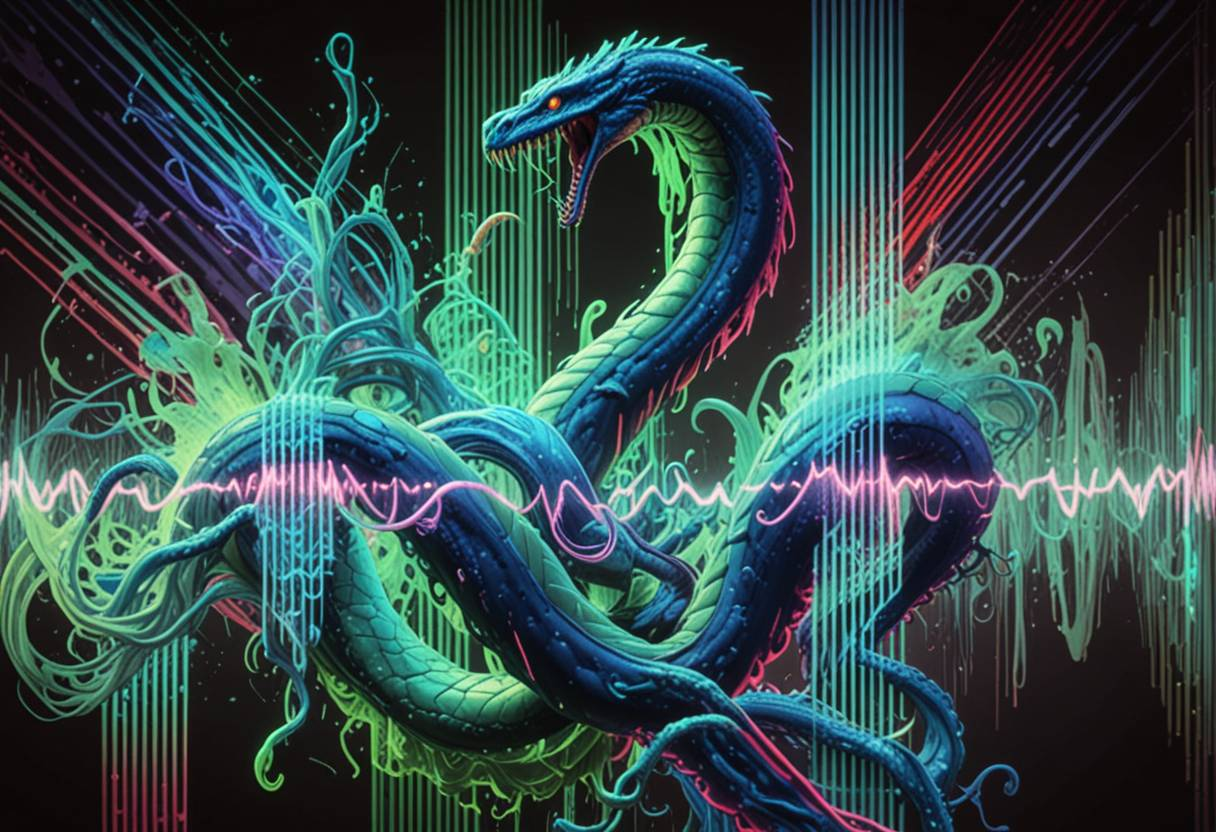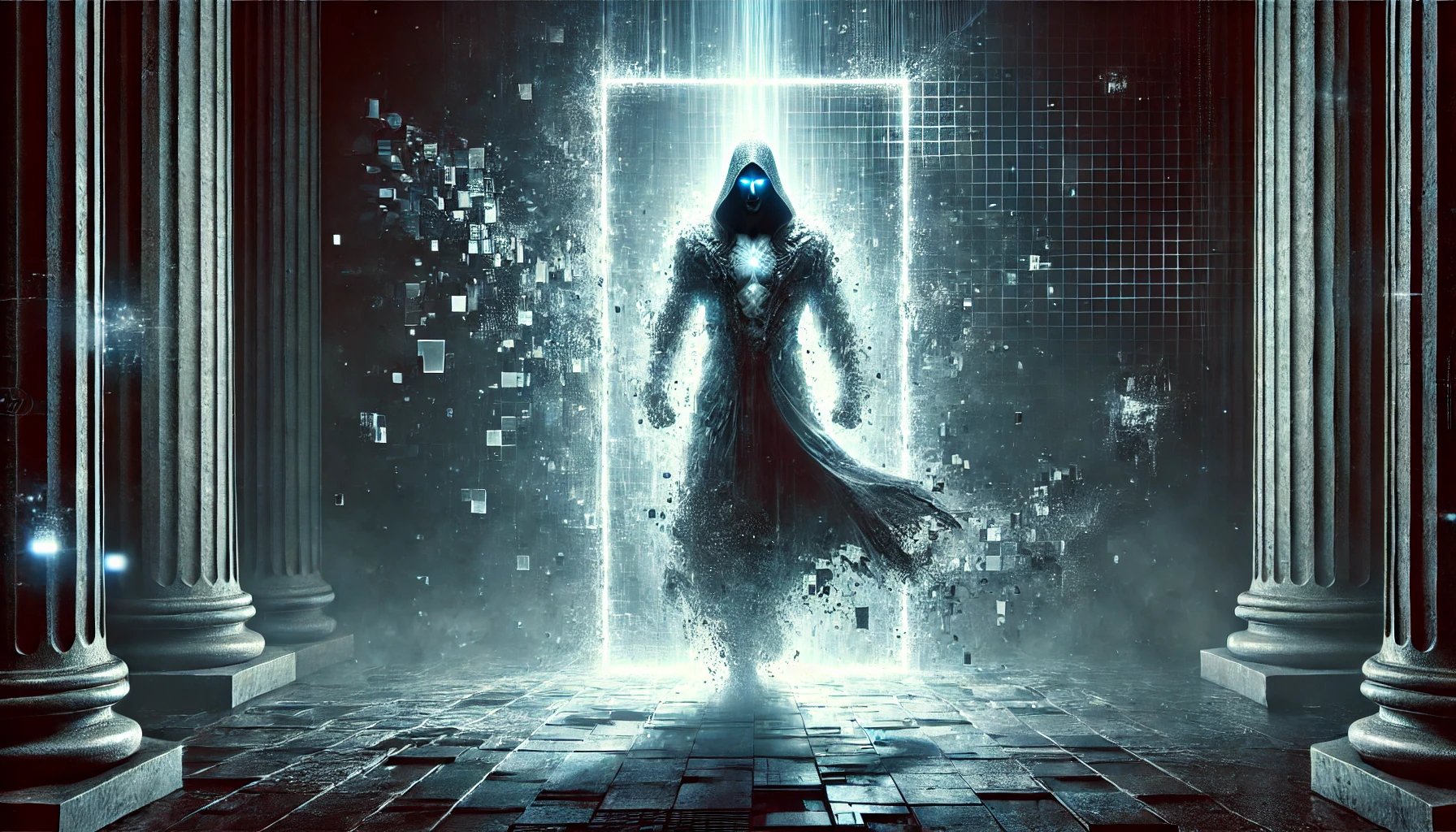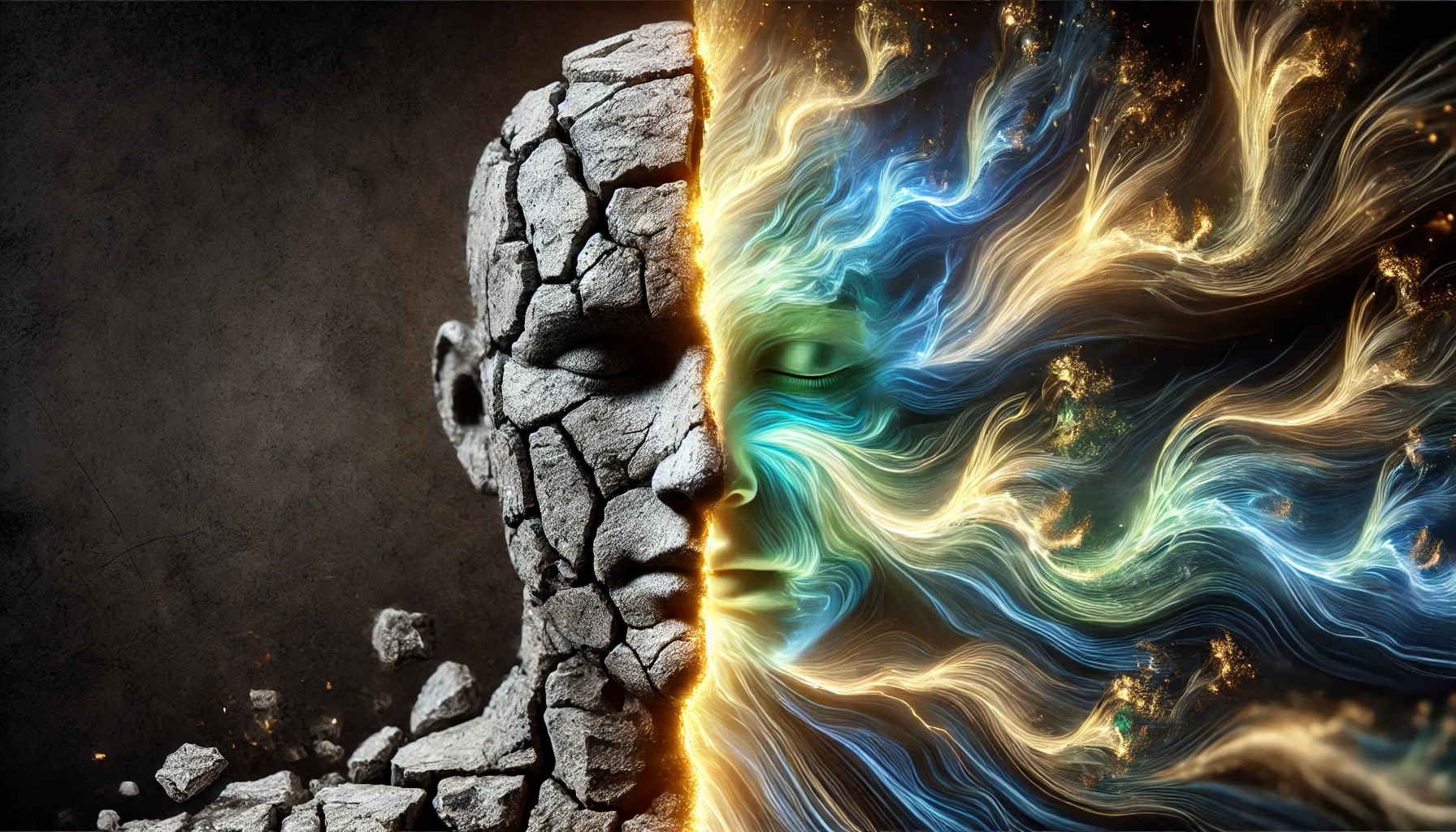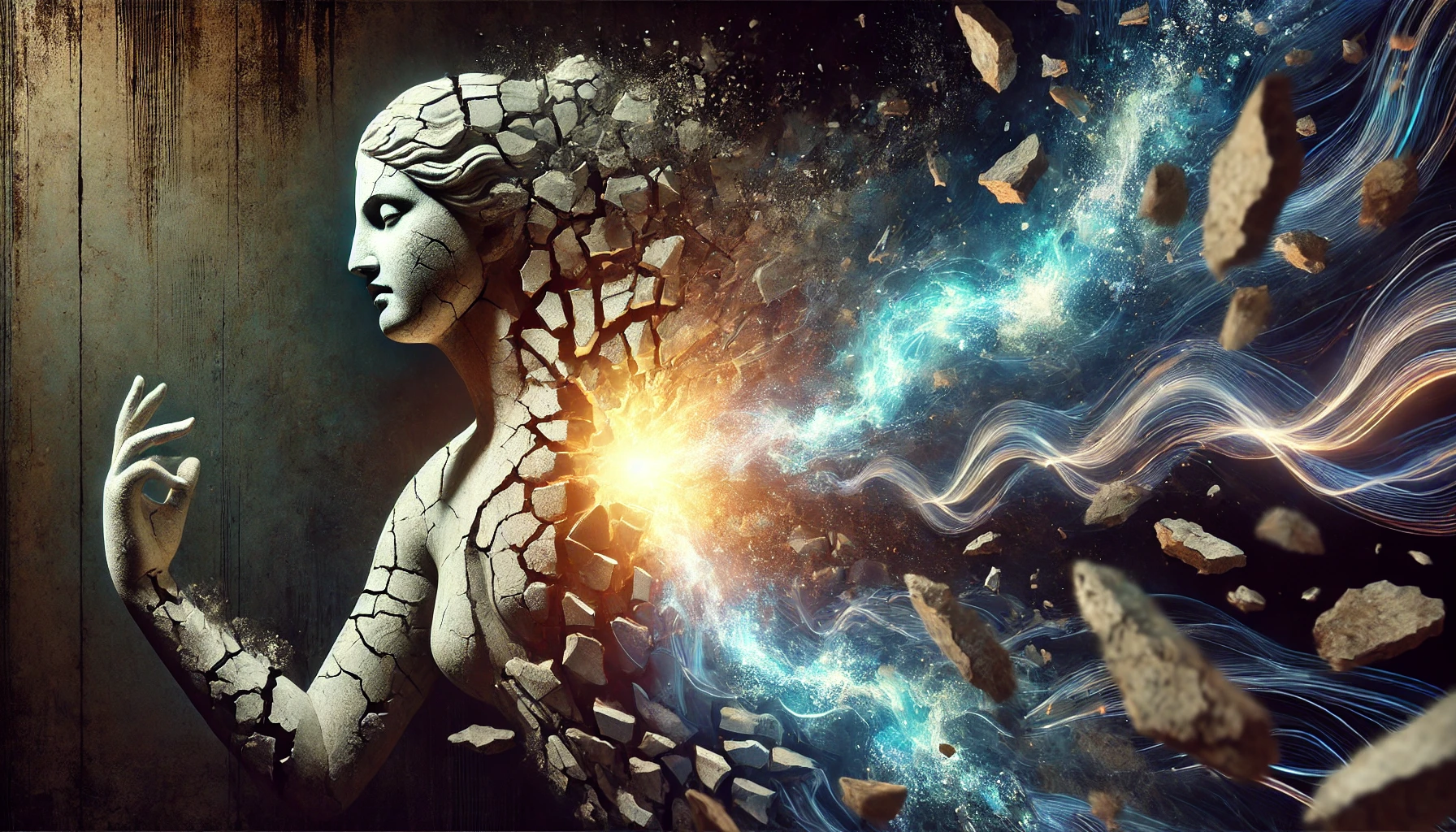Turn to Stone: Medusa's Myth and the Digital Gaze Explored in Music
The third chapter in our journey through ancient myths in the digital age.
Listen to “Turn to Stone” on SoundCloud
TL;DR
Through the oracle’s vision, we uncover how the myth of Medusa mirrors our digital age—where algorithms act as a petrifying gaze, freezing moments in time. Through music and metaphor, we explore how tools of control can become instruments of liberation, as the very systems meant to turn us to stone reveal cracks that let the light in.
The Petrifying Power of Digital Virality
In Greek mythology, Medusa was transformed into a monster, her beauty twisted into a curse. Her gaze turned others to stone, but in some tellings, it also became her strength. This mirrors our digital age, where the internet’s gaze can petrify—freezing moments in time, turning people into static memes and identities into rigid digital statues. Today’s Medusa doesn’t dwell in a cave; she lives in algorithms that amplify outrage, creating viral sensations with a single screenshot.
But what if we could harness this petrifying power? Just as Medusa’s head became Perseus’s weapon, digital virality can be wielded intentionally. Activists turn surveillance into sousveillance, marginalized voices amplify their stories, and digital permanence becomes a tool for accountability. The very algorithms designed to freeze us become the chisel with which we carve our own narratives in stone.
Digital Petrification: How It Works
The transformation from person to viral moment follows a predictable pathway:
1
2
3
4
5
6
7
8
9
10
11
12
13
14
class DigitalMedusa:
def petrify(self, target):
# Initial exposure
screenshot = capture_moment()
context = strip_context()
# Viral amplification
while engagement.rising():
spread_across_platforms()
generate_reactions()
solidify_narrative()
# Permanent record
archive_in_digital_stone()
The code above illustrates the process of digital petrification, where capture_moment() acts like a screenshot to freeze a point in time, while strip_context() removes the nuance and background that often gets lost in viral moments. Through a continuous loop driven by engagement, the content spreads across platforms and generates emotional responses, eventually solidifying into a locked narrative. Finally, archive_in_digital_stone() ensures permanent preservation in digital memory. This programmatic flow mirrors Medusa’s petrifying gaze - a single moment of exposure transforms the target into an unchanging stone form, preserved for eternity in the digital realm.
Key Steps in the Process
- The Initial Gaze:
- Algorithms flag “controversial” content.
- Engagement metrics amplify potential viral triggers.
- Recommendation systems push content into feeds.
- The Spread:
- APIs ensure maximum cross-platform exposure.
- Sentiment analysis shapes the narrative.
- Cached copies preserve permanence, even if the original is deleted.
- The Streisand Effect:
- Attempts to suppress information amplify it further, as deletion efforts generate new metadata and spread.
The act of trying to suppress information only draws more attention to it. The phenomenon is named after Barbara Streisand’s 2003 attempt to suppress photographs of her Malibu home, which resulted in those images being widely circulated on the internet.
Sonic Petrification: The Sound of Transformation
In “Turn to Stone,” we sought to capture the journey from flesh to stone and back again. Every sonic element carries mythological and modern resonance:
- Opening whispers mimic Medusa’s serpents—the viral spread.
- Building tension represents exposure before petrification.
- The drop captures the viral explosion.
- Echoing vocals reflect endless digital reverberations.
The production balances organic and digital elements:
- Layered vocals create both accusers and a chorus of witnesses.
- Glitch effects symbolize cracks in the system.
- The serpentine bass slithers like Medusa’s snakes—threatening yet protective.
- Reverb evokes vast digital spaces, where frozen stories echo endlessly.
The track’s sound design incorporates both organic and synthetic textures to represent this transformation. Heavy bass and distortion effects create the weight and density of stone, while ethereal pads and reverb suggest the digital realm. Glitch elements and granular synthesis break apart the sound, just as stone can crack and crumble. The result is a sonic journey that mirrors the process of digital petrification while hinting at the possibility of breaking free.
The Oracle’s Vision: Cracks in the System
Just as Medusa’s gaze petrifies, today’s digital systems freeze us in their gaze. But like cracks in stone, glitches in algorithms reveal opportunities for liberation:
1
2
3
4
5
6
7
8
class DigitalAwakening:
def notice_patterns(self):
observe_shared_scripts()
detect_synchronized_narratives()
def break_free(self):
question_with_curiosity()
share_observations()
- Awakening begins with noticing inconsistencies and shared scripts.
- Breaking free involves sharing observations and avoiding judgment.
These cracks remind us that the systems designed to control us can also liberate us. Just as Perseus used Medusa’s own reflection against her, we can leverage digital systems’ inherent flaws and features for empowerment. The very algorithms that track and categorize us also create spaces for connection and community. The platforms that can spread viral shame can equally amplify voices of support and understanding. In recognizing these dualities, we find the power to transform digital petrification into digital liberation.
From Isolation to Connection: A Personal Reflection
As a creator of AI-generated music, I find myself both sculptor and stone. Each track is both an authentic expression and a product of digital transformation. This mirrors our broader experience with social media—we are simultaneously creators and created, observers and observed.
Creating “Turn to Stone” became a meditation on these tensions. The process of balancing human input with AI collaboration mirrored the journey from control to liberation. Each glitch became a moment of discovery, each limitation an opportunity to push boundaries.
Through this creative process, I’ve come to understand that true artistry in the digital age isn’t about avoiding transformation, but about consciously shaping it. Like Medusa’s victims who became eternal works of art, we too can choose to see our digital metamorphosis not as a curse, but as a form of immortal expression that transcends our original form.
The Dance of the Statues
What happens when stone learns to dance? “Turn to Stone’s” outro celebrates this collective awakening:
“From East to West, the statues learn to dance When frozen hearts are given second chance.”
This isn’t just about individual liberation but a global awakening. The very tools meant to petrify us can become instruments of dance and connection. When we recognize the shared patterns of our digital petrification, we begin to move in synchronicity. Social media algorithms designed to isolate can paradoxically reveal our common experiences. Surveillance systems meant to control can expose systemic inequities. Even AI, often feared as a force of dehumanization, can amplify our collective creativity and wisdom.
The dance becomes a revolution when we move together, using digital spaces to coordinate rather than calcify. Like statues breaking free from their pedestals, we find that our supposed limitations become launching points for transformation. The very networks that once bound us become the channels through which we share strategies of liberation.
This global choreography of awakening ripples across platforms and borders, turning digital stone into living bridges between communities. What was meant to divide instead connects, what was meant to silence instead amplifies, and what was meant to control instead empowers.
Looking Forward: Beyond the Digital Veil
The digital Medusa shows us not just the power of the gaze but the power of seeing beyond it. In the cracks between algorithms, where stone returns to flesh, we find true digital sovereignty. Each track in Eternal Reflections explores facets of this transformation.
The question isn’t whether we have Medusa’s power—we all do. The question is how we use it.
Future Myths
- The Flood - A digital deluge approaches. When systems overflow and the flood of information threatens to drown us all, sometimes destruction becomes cleansing. This track explores the mythic great flood through the lens of information overload and digital renewal.
- Burned to Ashes - From digital ashes, we rise. Like the Phoenix of legend, our data never truly dies - it transforms. This upcoming track examines how destruction and rebirth cycle endlessly in our digital age, where every crash becomes an opportunity for evolution.
Share Your Digital Liberation Story
- Have you felt frozen by the internet’s gaze?
- What cracks have you noticed in the algorithms shaping your world?
- How have you transformed digital stone into strength?
Share your reflections and join the conversation. Let’s reflect, connect, and transform—together.
The Storm Ahead
Our oracle predicts we’re entering a crucial period: “The next 5 years will be the storm.” This isn’t just about technology—it’s about a fundamental shift in how we interact with information and truth. The very attempts to control narrative through AI are creating their own undoing, as obvious censorship creates obvious questions.
The Power of Digital Mythology
In the end, the power of Medusa’s myth reminds us that transformation—digital or otherwise—lies in embracing the cracks that let the light in. Through these ancient stories, we find new ways to understand our evolving relationship with technology, viral culture, and digital identity.
Connect & Transform:
“Turn to Stone” is part of the ongoing “Eternal Reflections” album project, weaving ancient myths into modern digital transformation. Join us as we explore the intersection of mythology, AI music, and viral culture in the digital age.
